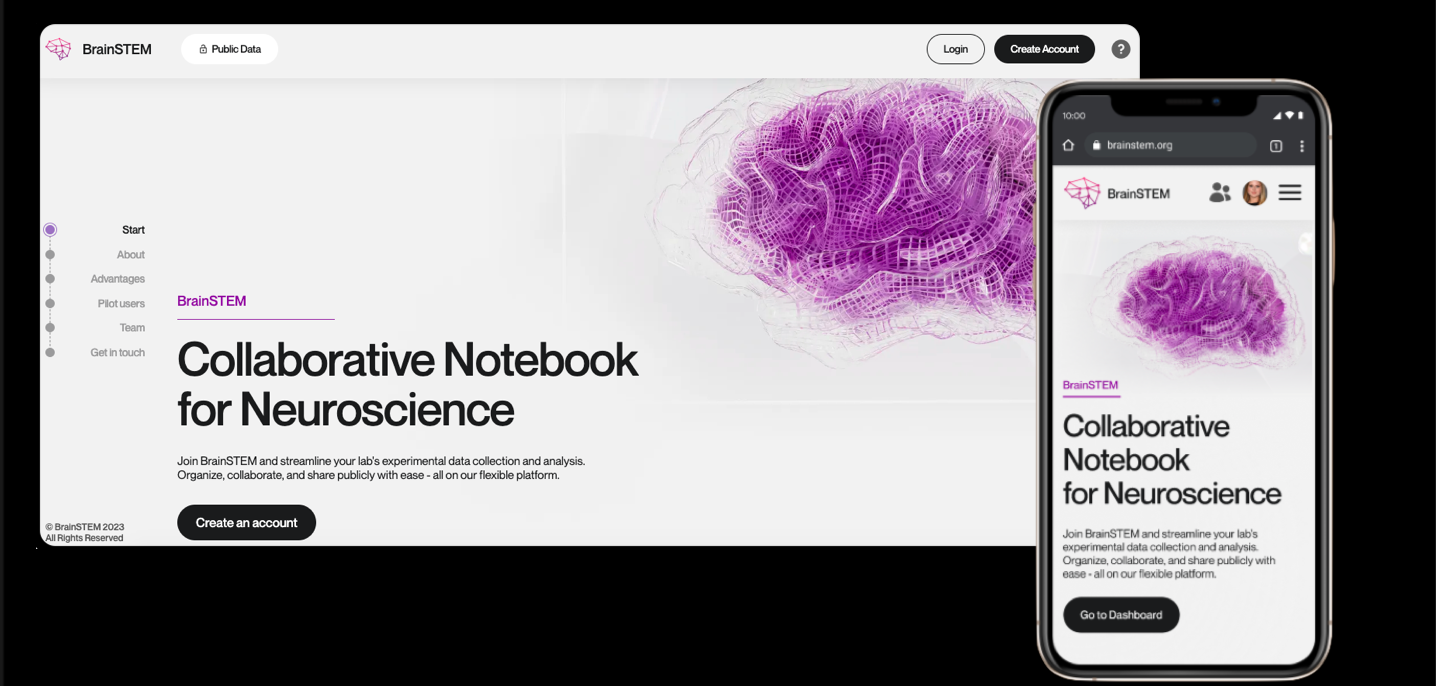Quoin worked with researchers at NYU Langone Health’s (NYULH) Neuroscience Institute to enhance the user experience for BrainSTEM, a web-based tool that facilitates data analysis and sharing. Developed by researchers at NYULH’s Neuroscience Institute, BrainSTEM (Brain STructured Experimental Metadata) is a centralized, collaborative electronic lab notebook for experimental neuroscience. The web-based platform was designed with a customizable interface to streamline research processes and facilitate collaboration both within and across labs.

Tools such as BrainSTEM are critical for the world of neuroscience research, with complex reams of metadata and laboratories spread across the globe. At its most basic, BrainSTEM is essentially a type of electronic lab notebook (ELN) - a software tool that allows scientific researchers to enter protocols, taxonomies, observations, and notes, while integrating with external repositories of raw instrument data. The application can be used on computers or mobile devices, replicating the convenience and simplicity of a paper lab notebook.
Unlike generic ELN’s, BrainSTEM provides a number of scientific tools specific for neuroscience and the needs of the NYU Langone research community. It is designed to capture a range of electrophysiology, imaging, and behavioral data collection, and is built on a flexible data model so it can be extended to capture other types of data as well. Granular access control enables collaboration within or across labs, while built-in standards ensure that data will be understandable and interoperable. The lab data can be accessed through either a web interface or REST API, and supports sophisticated querying through a public web interface.
BrainSTEM was designed for ease of setup and adoption, but NYULH aimed to further broaden its distribution in the neuroscience research community during the next phase. The research team had chosen a framework (Django JET) suited for quick, early development; however, this solution also came with a clunky out-of-the-box interface. Early testing of the prototype identified UI/UX pain points that needed to be fixed in the beta version of BrainSTEM, so Quoin was engaged to support their IT team during the next round of development. Our goal was to redesign elements of the application to better attract and engage new users.

The Quoin team worked to adapt and strengthen NYULH’s tech stack to allow for a better user experience. We maintained the initial framework of Django JET and jQuery, yet introduced Vue.js to allow for more complex front-end development. Our design and development experts meticulously analyzed the initial app, provided a comprehensive assessment, and implemented strategic improvements to create a more intuitive product that adheres to user-centric principles. In particular, our team focused on organizing and managing raw data more intuitively and efficiently. Quoin technologists also developed new features, such as enabling autosave on some items and adding timeline visualizations for experiments. Throughout this process, we concentrated on establishing a consistent UI across the platform.


